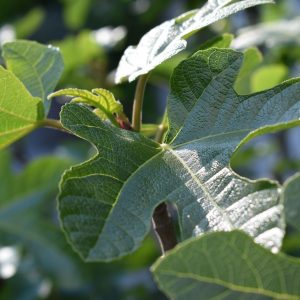Fig Leaf

While the fig fruit has long enjoyed culinary acclaim, the fig leaf is an emerging botanical in gin distillation, valued for its unique aromatic qualities and contribution to flavour complexity. Derived from the Ficus carica tree, fig leaves impart a distinctive green, creamy note with subtle coconut, vanilla, and fresh hay-like undertones – a profile quite unlike the sweetness of the fruit itself.
In gin, fig leaf offers an elegant, unexpected twist. It lends a soft, rounded character that can bring depth to citrus-led profiles, add a layer of intrigue to floral-forward gins, or complement creamy, nutty, or woody notes. When used judiciously, fig leaf can act as a gentle bridge between brighter top notes and more resinous or earthy base botanicals, enhancing structure without overwhelming other components.
Distillers typically use fig leaves either fresh or dried, depending on the desired aromatic emphasis. Fresh leaves bring greener, more herbaceous tones, while dried leaves tend toward nuttier, softer aromas. The essential oils within fig leaf – including coumarins and furanocoumarins – are volatile and delicate, so careful handling during distillation is key to preserving their character.
Aside from its aromatic appeal, the fig leaf has resonance in Mediterranean and Middle Eastern cultural heritage, adding a subtle storytelling dimension to gins that seek to express terroir or evoke a sense of place.
While still relatively niche, fig leaf is gaining traction as a modern botanical – especially among distillers seeking a creamy, naturally aromatic note without resorting to synthetic flavourings or dairy-based botanicals. Its growing popularity reflects a broader trend in gin toward nuanced, layered flavour experiences that elevate natural ingredients in creative and contemporary ways.


